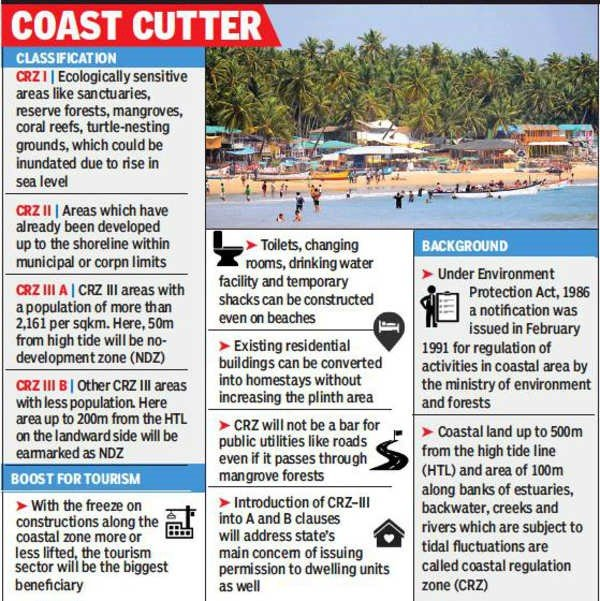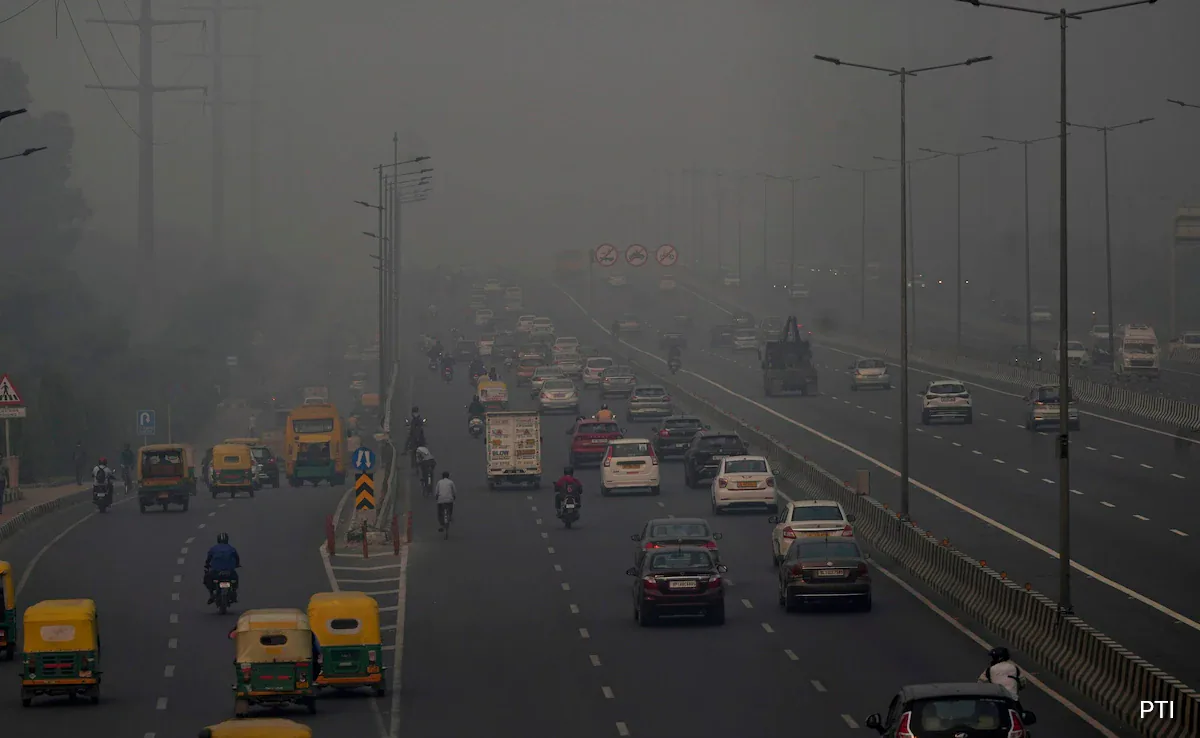- In November 2024, The Union Ministry of Environment, Forest and Climate Change (MoEFCC) approved the Coastal Zone Management Plan (CZMP) for 10 coastal districts in Kerala.
- The approved plan aligns with the Coastal Regulation Zone (CRZ) Notification, 2019, which relaxes previous restrictions and opens up new possibilities for development along Kerala’s coastline.
What is the Coastal Zone Management Plan (CZMP)?
- The CZMP is a framework designed to regulate development activities along India’s coastal areas, ensuring sustainable growth while preserving sensitive coastal ecosystems.
- The Ministry has now approved the CZMP for 10 coastal districts of Kerala. These districts are:
- Kasaragod
- Kannur
- Kozhikode
- Malappuram
- Thrissur
- Ernakulam
- Kottayam
- Alappuzha
- Kollam
- Thiruvananthapuram
The approval allows these districts to benefit from the relaxed CRZ rules under the Coastal Regulation Zone Notification 2019, which will now permit development activities—including construction of buildings—toward the seaward side of the High Tide Line (HTL).
The Process of CZMP Approval:
- The Ministry of Environment has requested that the signed copies of the approved CZMPs for these 10 districts be made publicly available through the Kerala Coastal Zone Management Authority (KCZMA) website within one month.
- The Ministry clarified that any applications for CRZ clearance submitted after the CRZ 2019 notification will be processed under the new provisions of the CRZ Notification, 2019.
- The Coastal Regulation Zone was initially set up to conserve and protect the coastal environment and marine areas.
- It aimed to ensure the livelihood security of fishing communities and local populations, promoting sustainable development that takes into account environmental concerns, such as the dangers of natural hazards, sea-level rise due to climate change, and other environmental factors.
What Does This Mean for Kerala?
- Kerala has a coastline of approximately 590 km, and nine of its 14 districts are located along the coast of the Arabian Sea.
- The 2011 Census revealed that Kerala’s population density is 859 persons per square kilometre, which is more than double the national average of 382 persons per square kilometre.
- Kerala’s coastal districts are densely populated, and these areas are experiencing significant demographic pressure, leading to increased land use and environmental stress.
- Impact on Local Bodies: Around five corporations, 36 municipalities, and 245 grama panchayats in the coastal areas will be subject to the Coastal Regulation Zone rules, which will now guide the development and construction activities in these regions.
- Violations of CRZ Rules: Over the years, Kerala’s coastal areas have experienced significant violations of CRZ rules, including:
- Illegal reclamation of wetlands.
- Encroachments and unauthorized constructions along the coast.
- These violations were partly driven by the high demand for land and housing in the coastal areas.
The earlier CRZ 2011 regime focused on the conservation of coastal ecosystems, which played a significant role in protecting the livelihoods of the fishing community and coastal residents. However, this approach faced challenges in accommodating the need for development in these densely populated areas.
What Are the Benefits of the New CZMP?
The approval of the Coastal Zone Management Plan brings several benefits, particularly for the local population and development prospects:
Relaxation of Construction Rules:
- The approval of the CZMP will directly benefit approximately 10 lakh people, according to the Kerala state government’s estimation.
- Earlier, there were restrictions on the construction of new houses and repairs to existing homes in the coastal areas. These restrictions have been relaxed, facilitating more development.
Reduction in No Development Zone (NDZ):
- The No Development Zone (NDZ) is the area that must be left untouched around coastal regions. Under the new regime, the NDZ has been reduced to 50 meters from the earlier 100 meters in 122 local bodies of Kerala.
- 37 village panchayats in Kerala are categorized as CRZ-III A, where the NDZ has been reduced to 50 meters from the 200 meters in the CRZ 2011 notification.
- CRZ-III A areas are rural areas with a high population density—2,161 persons per square kilometer (according to the 2011 Census). The reduction in the NDZ will allow construction activities in these areas to be more feasible.
CRZ-2 Category for More Areas:
- 66 village panchayats are now included in CRZ-2, which permits both residential and commercial construction along the building line of authorized structures.
Total NDZ Area Reduction:
- The NDZ area in Kerala will be reduced significantly, from 239.431 sq. km under CRZ 2011 to 108.397 sq. km under the new CRZ 2019 guidelines.
Concerns with the New CZMP
Impact on Mangrove Vegetation:
- Mangroves are essential for maintaining coastal ecosystems. They provide breeding grounds for marine life and help in preventing coastal erosion.
- The new CRZ 2019 rules have reduced the buffer zones around mangroves:
- Buffer zone for government-held mangrove areas has been reduced from 4,300 hectares to 2,500 hectares.
- Private lands with mangroves will no longer have mandatory buffer zones, which could encourage exploitation of mangrove areas, leading to further degradation of these ecosystems.
- While private landowners may benefit from this decision, it poses significant risks to the protection of mangrove ecosystems in the state.
Environmental Risks:
- The relaxation of the NDZ and the removal of mandatory buffer zones around mangroves and other sensitive areas could lead to the destruction of critical coastal ecosystems. This could result in the loss of biodiversity and environmental services that coastal ecosystems provide, such as storm protection, carbon sequestration, and sustaining marine life.
Increased Development Pressure:
- While the new rules open up development opportunities, the increased construction along the coast could lead to unregulated urbanization, pollution, and further pressure on coastal ecosystems.
What are CRZ Norms (Coastal Regulation Zone Norms) ?The Coastal Regulation Zone (CRZ) norms in India regulate human and industrial activities near the coastline to protect fragile coastal ecosystems. These rules aim to balance environmental conservation with development and human needs along the coast. Background and Legal Framework
Objectives of CRZ Norms
Classification of Coastal Zones under CRZ Notification 2011The coastline is divided into four categories (CRZ-I, CRZ-II, CRZ-III, and CRZ-IV) based on ecological sensitivity, level of development, and population density.  CRZ-I: Ecologically Sensitive Areas
CRZ-II: Developed Coastal Areas
CRZ-III: Undisturbed Coastal Areas
CRZ-IV: Aquatic Areas
New Rules and Modifications under CRZ Notification (2018-19)CRZ-III (Rural Areas)
Special Provisions for Islands
These changes are aimed at promoting sustainable development while ensuring coastal ecosystems remain protected. Key Regulations under the CRZ Notification 2011 and 2018-19
|





